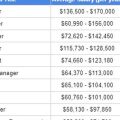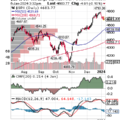A blistering rally in the price of uranium could have further to run, said investors, after Kazatomprom, the world’s largest producer of the radioactive material, warned of supply shortfalls in the coming two years.
The Kazakh mining company responsible for more than a fifth of global output warned on Friday that its production this year would be lower than expected because of shortages of sulphuric acid, which is essential to extract uranium from ore. It added that its production plans for next year could also take a hit.
“If limited access to sulphuric acid continues throughout this year, and should the company not succeed in catching up with the construction works schedule at the newly developed deposits in 2024, Kazatomprom’s 2025 production plan may also be affected,” it said.
The production challenges for Kazatomprom could give further impetus to a market that has already seen prices of uranium, which is used to fuel nuclear reactors, more than triple since the start of 2021 to a 16-year high. One trade was even made at $100 a pound on Thursday, according to UxC, a pricing data provider.

“The fact that they are dialling back their growth expectations reiterates the expectations for a bullish, tight market,” said Robert Crayfourd, portfolio manager of fund firm CQS’s Geiger Counter fund, which specialises in uranium equities. “It’s a real east versus west for who controls the pounds.”
Uranium supplies have shot up in recent years, driven by a renaissance in government interest in low-carbon nuclear power. Western countries have been extending the lifetime of nuclear plants, with EDF in the UK announcing plans on Tuesday to delay the closure of four reactors, while China and other nations are building new reactors.
The UK government also aims to expand nuclear capacity beyond the two EDF-backed plants that are already under construction or at the planning stage.
The surging prices for uranium is a stark reversal from decade-long oversupply following the 2011 Fukushima nuclear disaster that prompted a global pullback from atomic energy.
Uranium makes up a small proportion of the overall cost for nuclear power given how expensive reactors are to build, meaning that utilities’ concern is less about the price and more about the availability of nuclear fuel.
Prices have also been fuelled by interest from hedge funds in yellowcake, to capitalise on many countries’ shift to greener energy.
“There are currently no uranium pounds for sale. Producers are buyers,” said Nick Lawson, chief executive of Ocean Wall, an investment house, in a reference to mining companies buying uranium supply to meet their supply obligations. “Nuclear power producers are fighting for pounds against hedge funds.”
Kazakhstan is the global powerhouse for uranium production, generating 43 per cent of supply mainly through Kazatomprom — majority owned by the state sovereign wealth fund — and its joint venture partners, but western utilities hold growing concerns of its supplies falling under Russia and China’s sphere of influence.
Uranium mining equities gained a further shot in the arm this week off the back of announcements from the UK and the US to invest up to £300mn and $500mn respectively to bolster high-assay low-enriched uranium fuel production. It is currently only commercially produced out of Russia and would be vital for introducing small-modular reactors.
Despite a warning that it “may be challenging” to meet its goal to achieve 90 per cent of the volumes allowed under its subsoil agreements, Kazatomprom said it was committed to meeting its 2024 delivery obligations to utilities and other customers.


